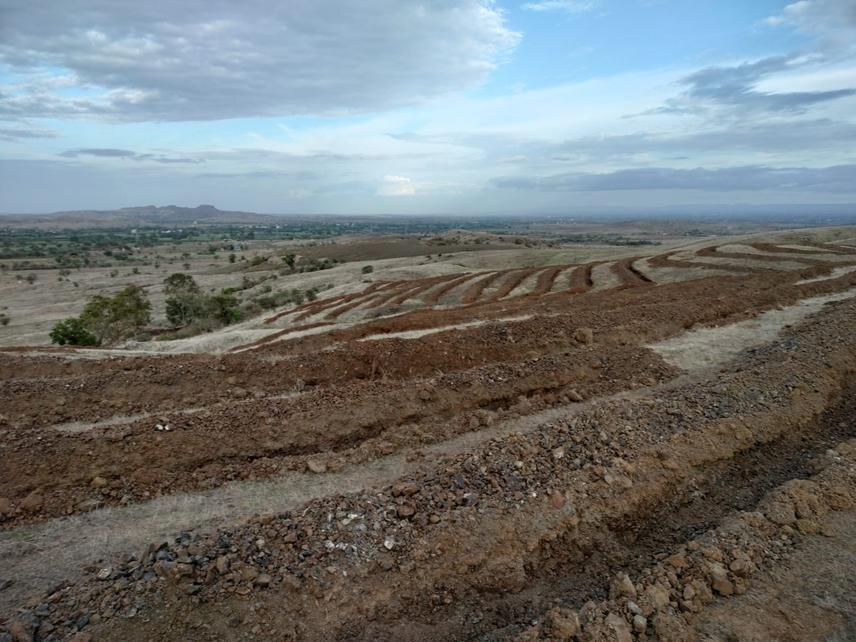Anisha Jayadevan
Tree-based restoration has gained widespread popularity as a solution to limit global warming. Global tree-based restoration projects and research on carbon sequestration opportunities disproportionately identify open natural ecosystems (ONEs) comprising grasslands, savannas and woodlands for afforestation. In India, around 4.3 million hectares of these ecosystems have been identified as potential carbon sinks via afforestation. Open natural ecosystems harbour high biodiversity and the livelihoods of pastoralist communities.

Soil bunds dug for water and soil conservation in tree planting sites. ©Anisha Jayadevan.
However, despite India’s long history of tree planting in ONEs, an accurate understanding of its spatial extent is missing. In addition, it is not well known whether tree planting in semi-arid ONEs will consistently increase carbon sequestration. Global research suggests that naturally increasing tree cover in ONEs leads to only limited gains in carbon storage. But it is not clear whether tree planting will follow this pattern. This is because tree planting often involves soil disturbances (“bunds”) and trees are planted at densities that may vary from natural tree cover patterns. In my project, I will understand the drivers and carbon sequestration potential of tree-based restoration in the semi-arid Open Natural Ecosystems of Maharashtra, India. These findings will enable informed decision-making on the suitability of tree planting initiatives in ONEs.
Header: A tree plantation in Maharashtra, India. ©Anisha Jayadevan.